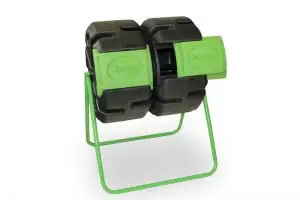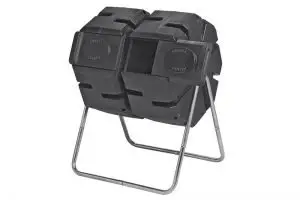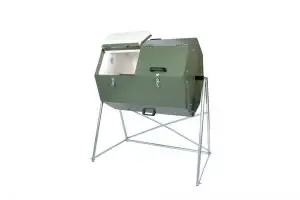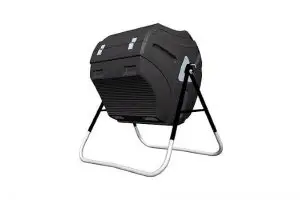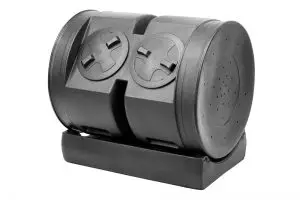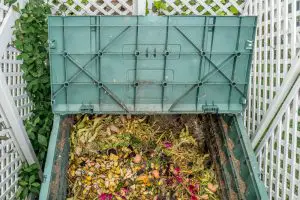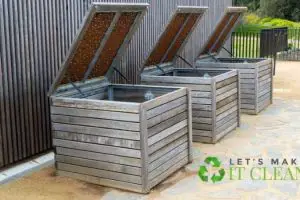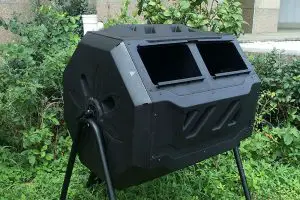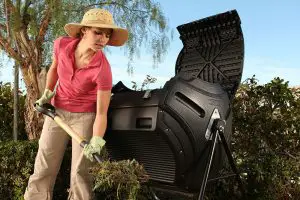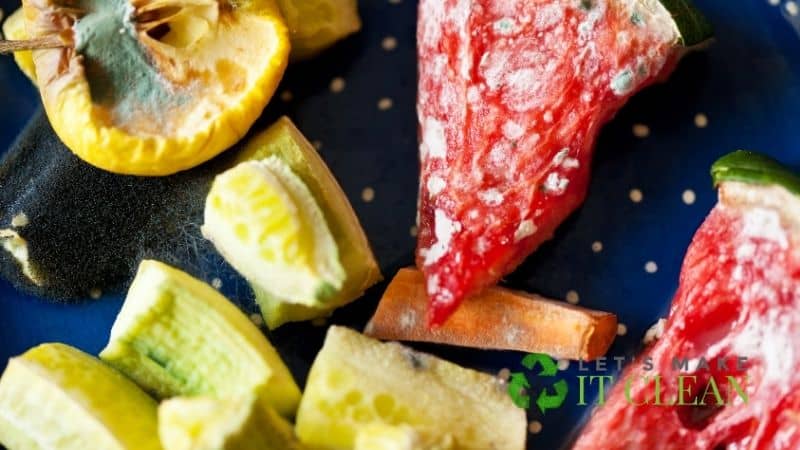Composting bread is possible, and it has no harmful effects on the compost.
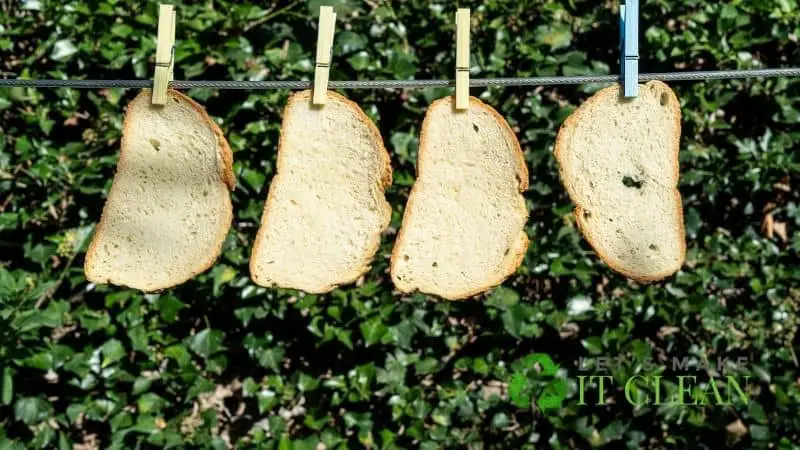
If you are looking for the best way to compost moldy bread, here is a comprehensive guide.
Quick Navigation
Can I compost bread?
This is a question that many gardeners struggle with. Whether or not to compost bread is a debate that is there among composters.
For some composting enthusiasts, having bread in your compost pile attracts pests and insects that disrupt the composting process.
Other composters disagree with this and insist that there is no composting ingredient that doesn’t attract pests.
Also, is bread green or brown compost an ingredient? To get healthy compost, you need to balance the nitrogen-rich green materials and the carbon-rich brown materials. So, where does bread lie?
Can You Compost Bread?
The decision to compost or not to compost bread will depend on a composter’s unique considerations.
Most composters advise against having bread in your compost pile. This advice is justified depending on the type of bread that is in consideration.
As much as you can add fresh bread into the compost pile, it will be best if you wait until the bread is stale and starts to produce molds.
The consideration of whether or not to put fresh bread into your compost bin depends on the bread products. Does the bread contain dairy products as part of its ingredients?
If it contains dairy products, it wouldn’t be the best option to add to your compost. Dairy products and meat are discouraged from the compost pile or the compost bin as they attract pests and animals that disrupt the decomposition process.
They can also contain harmful substances that can kill the microorganisms involved in the composting process.
On the other hand, stale bread is considered an organic matter, just like kitchen waste, food scraps, grass clippings, and other types of food waste. As such, it rots, just like any other organic matter.
Stale bread decomposes quickly and adds nitrogen to your compost piles. Bread is a perfect ingredient for your compost bin or compost pile as long as you prepare it well.
Also, some methods of composting can be better than others when it comes to decomposing bread.
Why should such a valuable ingredient for your compost go into waste? Why should it end up in a landfill where it could be detrimental to the environment?
While it’s no doubt pests, insects, and rodents love bread, that is not reason enough to waste the useful ingredient. It will be a good idea to have it in the compost piles alongside other kitchen scraps, and you’ll end up with healthy finished compost.
Can You Compost Stale or Moldy Bread?
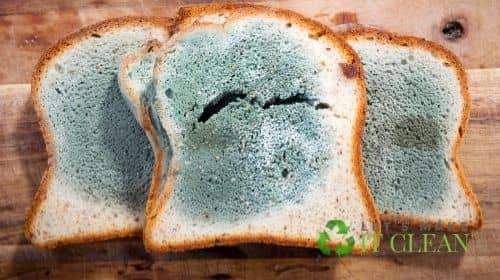
If you sometimes wonder whether or not to add moldy bread into your compost bin, you are not alone in this. Many gardeners wonder if it is best practice to use moldy bread.
Well, nothing stops you from using moldy bread when composting bread. Stale bread and other moldy goods are organic matter.
When you put organic matter in a compost pile, the first thing that happens is that they become moldy. You may not notice it as it happens quickly and will be gone during your next visit to the compost bin.
It would be best for the stale bread to end up in the compost bin and contribute to a healthy finished compost instead of ending up in the landfill.
Adding moldy ingredients to the compost helps to speed up the composting process. Mold cells act like other good bacteria that help the waste materials to decompose.
If you have a worm bin, the mold becomes food for the worms. Probably why you may never see the mold in the bin is because the molds eat it.
However, it would help if you were careful to note the color of your mold. Some molds can be harmful to the worms and can make them sick and eventually kill them.
Is Bread Brown or Green Compost?
There is an unending debate on whether bread should be considered green or brown compost.
Green materials are the ones with high nitrogen content, while brown materials have a high carbon content. A proper balance of the two results in healthy compost.
Brown materials are also high on fiber, which helps to prevent compaction and also enhances the aeration (See our best compost aerators). On the other hand, green materials are low on fiber.
Some composters put grains under the brown materials category, suggesting that they are high fiber foods. This may be because bread is good at pulling moisture from other types of foods, especially vegetables.
Plus, other people classify it as brown material because it is brown.
However, green materials don’t have to be green.
For instance, coffee grounds are green materials, but they are not green. They are classified as green materials because they are a rich source of nitrogen.
Bread is also rich in nitrogen. Therefore, it should be classified as green material instead of brown.
It is essential to know this so that you don’t put so much bread and other green food scraps in your compost such that you surpass the carbon to nitrogen ratio. For the composting process to be efficient, make sure only 1/3 of the ingredients are green materials.
Otherwise, you may end up with smelly compost.
Can You Compost Other Things Similar to Bread in Your Compost Pile?
Besides bread, gardeners want to know if they can compost other products such as leftover cake, etc.
While bread and other baked goods are the same in the ingredients that make them, they are separate in composting. These include:
Pasta
Nothing should stop you from adding your leftover pasta to the compost bin.
However, ensure that it doesn’t have substances such as cream or any fatty products that can affect the composting process. Plain pasta is the best for composting.
Having too much oil in a pile slows down decomposition and prevents the microorganisms from breaking down the materials.
Baking Goods
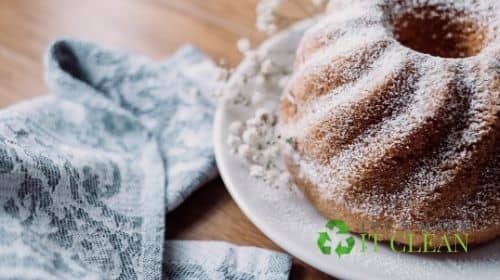
Baking goods have the potential of attracting pests just like bread. The sugar in the goods is a good attraction for ants.
Does that mean you shouldn’t have baked goods in your compost?
No, you can compost baked goods the same way you compost bread. Make sure you use the same process you use to compost bread.
Incorporating Bread in Your Compost Bin or Pile
If you want to add bread into your compost bin (see our kitchen bin reviews), first break it down into small pieces. Breaking it into small pieces ensures that it decomposes fast.
The faster it decomposes, the less likely it is for it to attract pests.
After breaking it into pieces, dig at the center of the pile using sticks and add the bread to the center of the pile. You can also include other food scraps.
Getting the bread at the center of the pile speeds up the decomposition process as there are higher temperatures at the center. It also makes it less likely for pests to access the bread.
Next, cover the bread and other scraps completely using brown materials such as dry leaves, sawdust, shredded newspaper, etc. The high fiber materials help maintain air pockets in the compost, which helps to aerate the compost and enhance aerobic bacteria’s activities.
It is essential that you maintain a balance between the brown and green materials for an efficient decomposition process. Failure to do so will lead to smelly compost.
If you wish to speed up the decomposition process, add some manure, garden soil, or finished compost on top of the bread. This helps the bread and other ingredients to break down faster.
Finally, fill back the hole with the compost you dug. Completely cover the bread with the compost to ensure no pests and rodents can access it.
Conclusion
Can you add bread to your compost? Adding bread to the compost won’t have any harmful effects on it. However, just like in any other compost ingredient, it’s essential to keep an eye on it.
Turn it often to ensure it is well aerated and ensure a balance between the brown and green materials to ensure effective decomposition.

